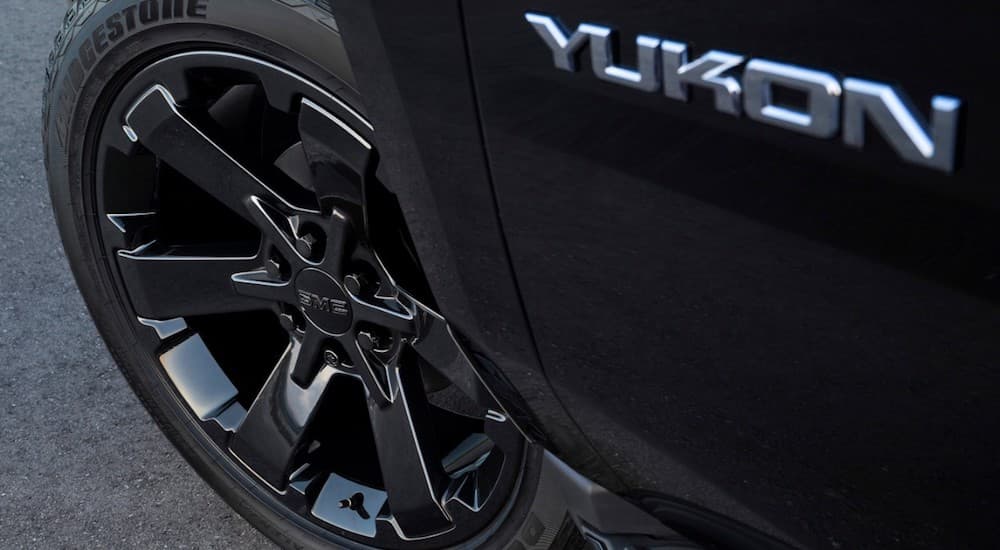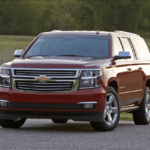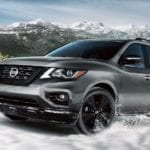Choosing your ideal vehicle should reflect your priorities and the unique demands of both your lifestyle and your budget. From the choice of make and model, to finance options, thorough research and genuine introspection can help to prevent any unwelcome buyer’s remorse. And in performing that due diligence, you’re doing a service to your own long-term finances while bolstering your likelihood of enjoying everything that your vehicle has to offer. In other words, if you only drive yourself around and are focused on fuel economy, don’t buy a 2019 GMC Yukon.
But all jokes aside, if you are looking for an SUV there are a number of factors which you should take into consideration. How many passengers will you potentially need to accommodate, and how regularly? What are the ages of those passengers? What are your cargo needs, both in terms of total space and frequency? In terms of duration, how long do you expect to be in the vehicle at any given time?
While this may seem like a series of no-brainers, the fact is that many people select their vehicle solely on make, model or price point. They disregard the fact that a vehicle just doesn’t fit their needs. They might buy more vehicle than they need or more flash than they can afford. And considering the fact that most crossover and SUV customers have to accommodate a family in one form or another, it’s best to understand your actual needs ahead of time.
With that in mind, let’s break out some of the options, placing the questions that you need to ask yourself in perspective.
Why Do You Want an SUV?
It might seem like a basic question, but it’s an honest one. For example, you might be looking for a more reliable vehicle, able to tackle adverse driving conditions or off-roading. You might have a growing family, and need all the space (and entertainment distractions) that you can handle. Or maybe you just live an active lifestyle and appreciate increased cargo options. Hell, maybe it’s all of the above. But once you understand why you want (and more importantly, how you plan to use) the SUV it becomes easier to identify which offering best suits you?
What is Your Budget?
Here comes the introspective bit. With the advent of the crossover, SUVs can range from sedan-level affordability to aspirational luxury. Once you understand whether you’re in the $20,000 – $30,000 range, the $50,000 – $60,000 range, or somewhere in-between it becomes easier to identify the makes, models and trim levels that fit your budget.
And don’t think that a more accessibly-priced SUV means a sacrifice in terms of quality or amenities. Almost more so than any other, the Crossover/SUV segment is designed with comfort in mind, with countless upgrades and specialty packages served up to create the ideal driver and passenger experience. You just need to know where your price point is.
Size Matters
While somewhat applicable to pricing, the debate over what size of vehicle you need is an important consideration. Some of the smaller crossovers might only seat 4-5 passengers comfortably, while full-size SUVs are designed to accommodate up to 8-9. It’s a significant distinction and one that should be made with introspective honesty. So how many passengers do you expect to transport at-once? Will you need to accommodate cargo, in addition to those passengers? If so, how much space do you need?
Climate & Road Conditions

Will You Be Towing?
While an SUV doesn’t offer the same towing capacity as a truck, it’s not uncommon for larger SUV to be employed in the pulling of various trailers. Knowing your likelihood of towing anyone or anything is crucial in the selection of an SUV. If that likelihood is nil, well, the sky’s the limit. But if you intend to use that SUV in trailering, you’ll want to explore (i) towing capacity (ii) power and torque ratings and (iii) trailering packages, if available.
Again, if towing will be a major requirement, you might want to look into trucks with extended cab options — but certain larger SUVs handle moderate towing every day.
What Infotainment Options do You Require?
Advances in technology have evolved both the driver and passenger experience in today’s vehicles. From driver assistive features (park assist, adaptive braking, rear camera, etc) to heated seats and multi-zone climate control, many of these advances have helped to create a more welcoming and comfortable experience.
But even more impressive are the advances in infotainment technologies, many of which are available at certain trim levels or with enhancement packages. From 4G LTE Wi-Fi to power a family’s hand-held devices, to rear-facing DVD players, there is an array of options intended to make both short and long drives more palatable.
While your individual needs might not require such features, those who would prioritize such features should be conscious of which makes, models and trim levels feature them (standard or as part of an upgrade). Do the research. Ask the Questions.
ADAS and Safety Features
The last few years have introduced countless features designed to improve safety. Some of them we touched on moments ago, but each model year introduces an array of advancements. Depending on the model year selected, you might empower yourself to enjoy the latest and greatest. But not all automakers approach driver safety in the same way.
Advanced Driver Assistive Systems (ADAS) are fairly new to the equation. You might recognize terms like Cruise Control and Park Assist. But what about Adaptive Braking, or 360 View Monitoring. Today’s cars utilize cameras and sensors in such innovative new ways to increase visibility and act as a safety net for the driver. If safety is a priority (and it should be for everyone) this might be one of the most important areas to explore.
Exploring Your Options
Remember, it’s about the unique demands of your lifestyle and budget. There’s a reason that leading automakers like Ford and Chevy have decided to trim down their lineups, allowing for more focus on crossovers and SUVs. They are sensible, and accommodate the ever-expansive expectations of today’s drivers and passengers alike, offering comfortable and spacious accommodations, countless amenities, versatility in a wide range of driving conditions and an array of advanced safety features.
Ultimately, the choice is yours, and there are an ever-growing number of options to choose from. So take your time, weigh your needs and explore your options. With measured steps, you’re bound to be satisfied with the results. Good Luck.





